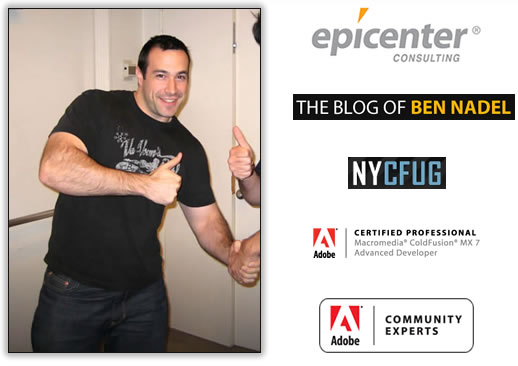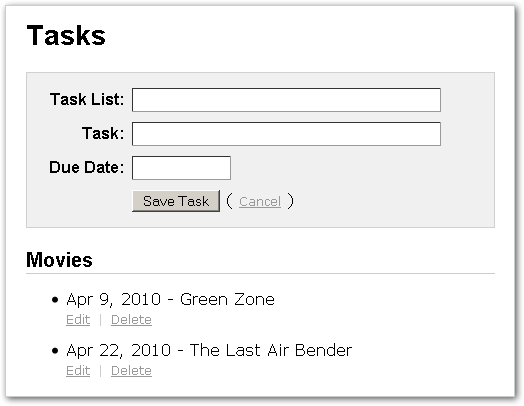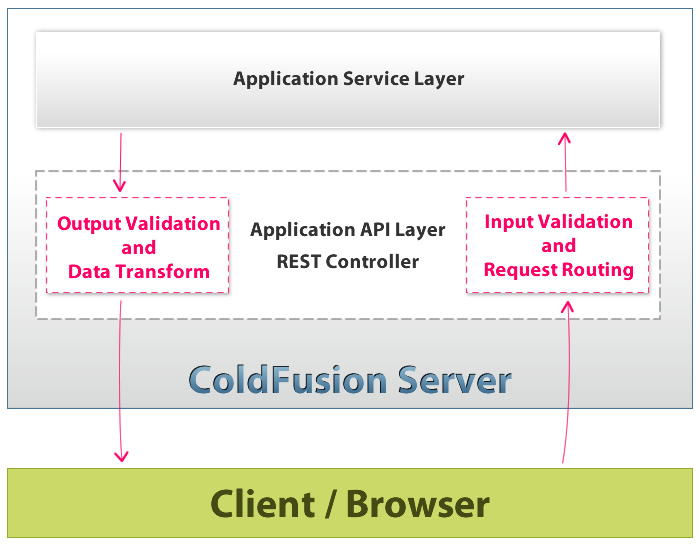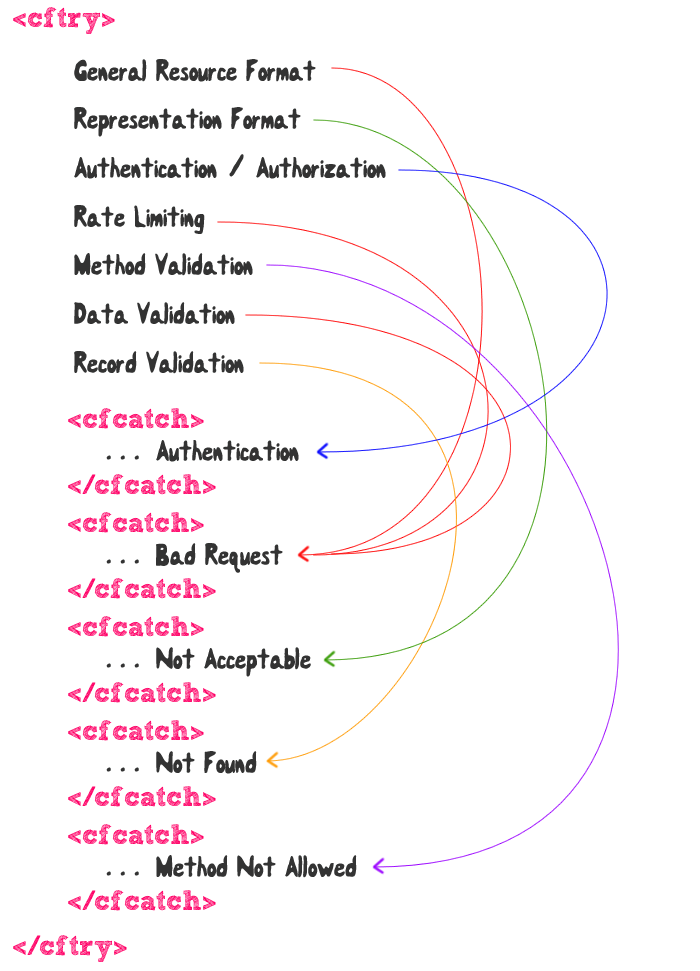-
Ben Nadel

-
Chief Software Engineer, Epicenter Consulting
-
Author of The Blog of Ben Nadel (www.bennadel.com)
-
Adobe Community Profession
-
Adobe Certified ColdFusion Developer
-
Co-Manager New York ColdFusion User Group
-
ColdFusion, XHTML, CSS, jQuery Developer
-
How I Programmed A Lot Of Years Ago
-
ColdFusion back-end
-
Static front-end
-
Some DHTML
-
Mostly every request returned HTML
-
All code on a single server
-
How I Programmed A Few Years Ago
-
ColdFusion back-end
-
Minorly dynamic front-end: Sack.js
-
Mostly every request returned HTML
-
Comsuming a few e-commerce web-service calls:
-
Payment gateways
-
Shipping estimates
-
How I Programmed Not So Long Ago
-
ColdFusion back-end
-
Finally... jQuery - progressive enhancement
-
Still, most requests returned HTML
-
Consuming more 3rd party web services:
-
Email campaigns
-
Compliance Services
-
"Screen scraping"
-
Payment gateways
-
Shipping estimates
-
How I Program Now (And In The Future??)
-
ColdFusion back-end / half "API"
-
Much thicker client font-end
-
Half requests return HTML, half JSON
-
Finally exposing minor 3rd party API functionality
-
So, What Do I Know About API Architecture?
-
Not much!
-
But, I know ColdFusion pretty well
-
Learning By Immitation: Twitter
-
That Twitter, it's so hot right now!
-
Rank #11 on Alexa.com
-
Learn from the outside-in
-
Lots of internal mystery / flexability
-
WWTD: What Would Twitter Do?
-
RESTful URL architecture
-
Basic authentication
-
Multi-format responses
-
Meaningful status code usage
-
Duplicate-post protection
-
Rate limiting
-
REST: Representational State Transfer
-
Revolves around unique "resources"
-
Uses verbs: GET POST PUT DELETE
-
Hides underlying technology
-
Path fully describes resource
-
URL parameters describe resource display
-
Examples:
-
GET: /products/123456
-
GET: /categories
-
DELETE: /products/123456
-
Basic Authentication
-
Base64 encoding of "Username:Password"
-
Server response:
-
HTTP/1.0 401 Authorization Required
-
WWW-Authenticate: Basic realm="Secure Area"
-
Client response:
-
Authorization: Basic dHJpY2lhOm5hdWdodHk=
-
Base64 encoding is not secure
-
Multi-format Responses
-
Response is a representation of the resource
-
Different resources support different formats
-
Examples:
-
GET: /products/1234.json
-
GET: /products/1234.xml
-
GET: /products/1234?format=json
-
Meaningful Status Codes
-
200 - OK
-
400s all caused by user interaction
-
400 - Bad Request
-
401 - Unauthorized
-
403 - Forbidden
-
404 - Not Found
-
405 - Method Not Allowed
-
406 - Not Acceptable
-
Duplicate-Post Protection
-
Prevents two successive identical posts
-
Returns previous post
-
Rate Limiting
-
Limits the number of API requests
-
400 Bad Request - GET Limit
-
403 Forbidden - POST Limit
-
Insightful headers:
-
X-RateLimit-Limit
-
X-RateLimit-Remaining
-
X-RateLimit-Reset
-
Monkey See, Monkey Do

View Demo
-
Task Demo API Outline
-
Tasks
-
GET: /tasks/get/{ID}.{FORMAT}
-
POST: /tasks/save.{FORMAT}
-
POST: /tasks/delete.{FORMAT}
-
Lists
-
GET: /lists.{FORMAT}
-
GET: /lists/{NAME}/tasks.{FORMAT}
-
API Request Life Cycle

-
You're In The Danger Zone!
-
There's a lot that can go wrong!
-
Every error requires a unique and meaningful response
-
Heavy use of CFTry, CFCatch, and CFThrow
-
CFTry / CFCatch / CFThrow

-
Let's Take A Look At Some Code

-
Closing Thoughts
-
CFM vs. CFC
-
Verb support
-
POST with CFHTTP / CFHTTPParam
-
Thank You For Listening
-
Ben Nadel
-
Blog: http://www.bennadel.com
-
Email: ben@bennadel.com
-
Ask Ben: http://www.bennadel.com/ask-ben
-
Consulting: http://www.epicenterconsulting.com




